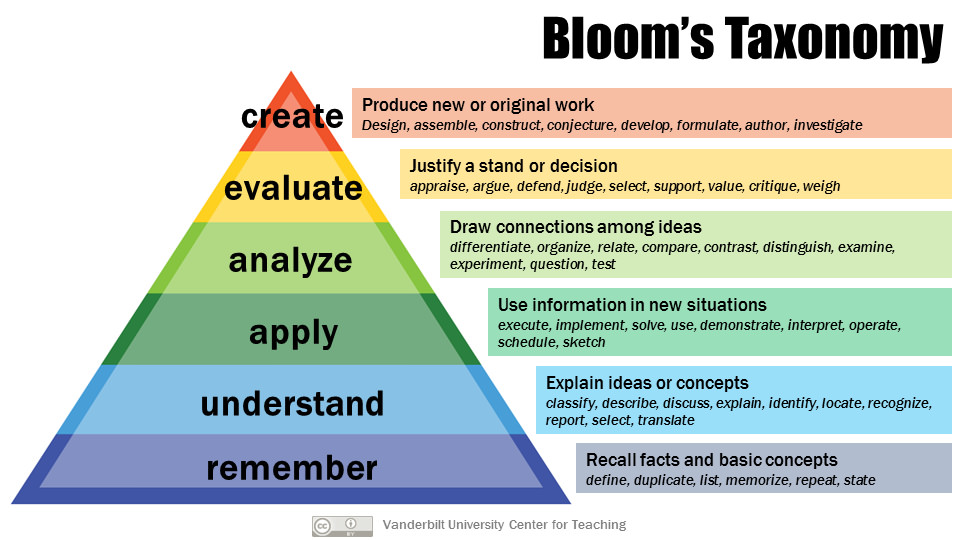Blooms Taxonomy
| Parent Note (Up) | education reading list |
|---|
Author : Patricia Armstrong
Year : 2010

The above image from the Vanderbilt University’s centre for teaching acts a solid base to understand Bloom’s taxonomy. Benjamin Bloom, along with other collaborators originally came up with the taxonomy, as a set of K-12 educational objectives.
As per the original taxonomy, knowledge was considered to be the base requirement. Each of the subsequent 5 levels wew skills which ranged from easy to difficult, concrete to abstract, and can only be developed after the base of knowledge exists.
The original taxonomy consisted of knowledge, comprehension, application, analysis, synthesis and evaluation.evaluation.
Revised Taxonomy
The book, a Taxonomy for Learning, Teaching and Assessing, reworks Bloom’s taxonomy. This updated version is particularly helpful because it is more comprehensively applicable to the education process, and has also been detailed out with procedures and examples. In the new taxonomy there are 6 cognitive processes (and sub-processes) and 4 types of knowledge (a sub-types).
The cognitive procedures are to:
-
Remember
- Recognise
- Recall
-
Understand
- Interpret
- Exemplify
- Classify
- Summarise
- Infer
- Compare
- Explain
-
Apply
- Execute
- Implement
-
Analyse
- Differentiate
- Organise
- Attribute
-
Evaluate
- Check
- Critique
-
Create
- Generate
- Plan
- Produce
The knowledge types are:
-
Factual
- Terminology
- Specific details and elements
-
Conceptual
- Classification and categories
- Principles and generalisations
- Theories, models and structures
-
Procedural
- Specific skills and algorithms
- Specific techniques and methods
- Criteria for selecting appropriate procedure
-
Metacognitive
- Strategy
- Understanding of context and condition
- Understanding of self